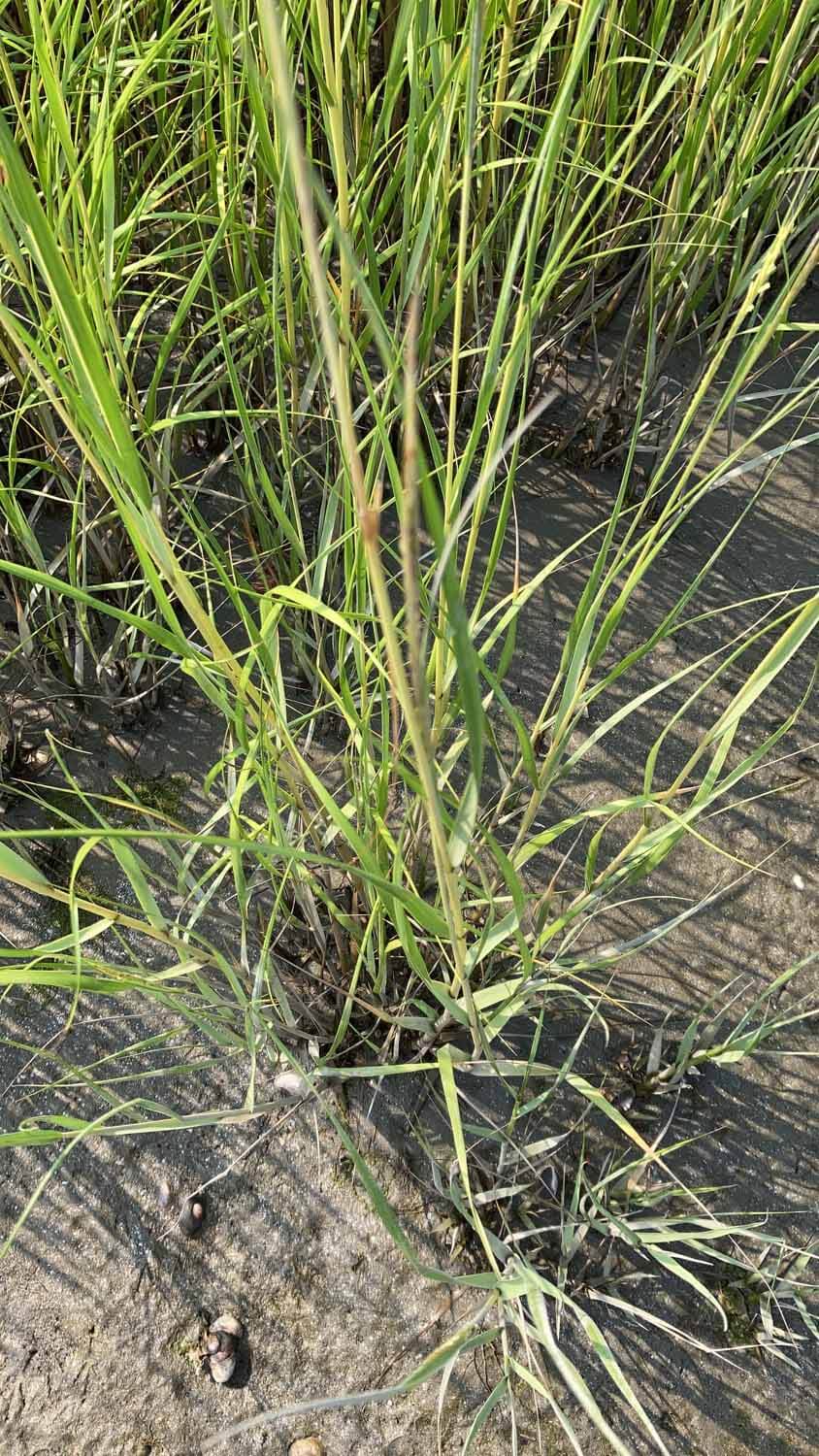Sporobolus Alterniflorus (a.k.a Spartina or Spartina alterniflorus)
Smooth / Saltmarsh CordGrass
by Angela Capinera
Your Mind in Bloom, LLC
“Sporo” comes from the ancient Greek sporos/ spora and means “seed”. Think of “spore” with fungi. Same word root family. “Bolus” comes from the ancient Greek bolos/ballein meaning “to throw”. “Alterniflorus” means having flowers (florus) on alternate (alter) sides of the stem.)
Many years ago when I began my foray into Stratford’s local environment, a gentleman told me looking out on the Great Meadows Marsh that the marsh to his viewpoint consisted of a “bunch of grass” and should be promptly and properly destroyed to build condominiums. My dear sir, wherever you are now, this “bunch of grass” does much more than meets the eye and has few things in common with the grass on your lawn.
First, the grass on your lawn usually does not consist of local or even native grass. The grass seed may be genetically engineered and/or brought in from overseas. The idea of a monoculture lawn came from European estates.
Second, without Sporobolus alterniflorus, severe flooding would occur on a regular basis, the landscape of the Town would look very different, and Stratford would not be a stop on the Atlantic Migration Flyway. Stratford would not have several species that exist within its’ borders without Sporobolus alterniflorus.
Sporobolus alterniflorus can often be found referred to as “Spartina”. There has been some renaming in the last decade due to mutations and closer and more specific genetic sequencing. Older materials, when referring to Spartina, are referring to Sporobolus alterniflorus.
Sporobolus alterniflorus houses and protects birds, fiddler crabs, ribbed mussels, and snails to name a few. Sporobolus alterniflorus remains a critical component of the local ecosystem due to the ability of the plant to sequester carbon dioxide from the air and water and its ability to survive and thrive in salty and brackish (mixture of salt and fresh) water.
Sporobolus alterniflorus is native to the East Coast of the United States. Sporobolus alterniflorus has been “introduced” in non-native areas for flood and erosion control yet has turned out to be a pest as it will choke out and mutate with other Sporobolus and Sporobolus-type species.
One cool aside: I use the Seek app to help identify and track where I find plants, animals, insects, etc. If you look at the map Seek provides, Sporobolus alterniflorus has only been located in coastal areas, including Stratford.
What about Sporobolus alterniflorus makes it so durable and necessary to our Town’s well-being? The first step relates to its location. (Interesting tidbit about it: it does not tolerate shade at all. That’s why it thrives in marshes.) When you look out on the marsh at Long Beach, especially from July through early November, the tall, green grass you are looking at is Sporobolus alterniflorus. For some reason it’s not as noticeable in Stratford that Sporobolus alterniflorus has a dwarf kind as well that thrive in higher parts and levels of marshes.
Next, like many other things, what lies beneath the peat (decomposing organic material) that Sporobolus alterniflorus thrives in holds the key. Sporobolus alterniflorus reproduces through rhizhomes (ginger and turmeric are common and edible rhizome plants).
Rhizhomes allow plants to reproduce asexually (no male or female parts needed) by sending out new roots and shoots horizontally and then the plants grow upwards. Rhizomes continuously build a silently growing system underneath the peat that helps Sporobolus alterniflorus “grip” into the peat and thereby keep it and the rest of the marsh from dissolving in major storms. This rhizome system also helps to suck in and holds, in addition to carbon dioxide, massive amounts of water. The marsh in Stratford has been estimated to hold 20 million (yes, that’s million) gallons of water at the peak of high tides. The marsh couldn’t do this without Sporobolus alterniflorus.
One cool physical feature that shows how strong and durable it is, comes with finding a stalk that has dried salt and peat on it. There is nothing in the world more unique that running your finger up that stalk and having the dried salt and peat on it and then looking at the stalk of Sporobolus alterniflorus and seeing that unlike the grass we have on our lawns, Sporobolus alterniflorus still stands tall and green and has not suffered any type of damage due to the salt.
Thank you. Many blessings. Have an awesome day.
“Never confuse Motion with Action.” – Benjamin Franklin

